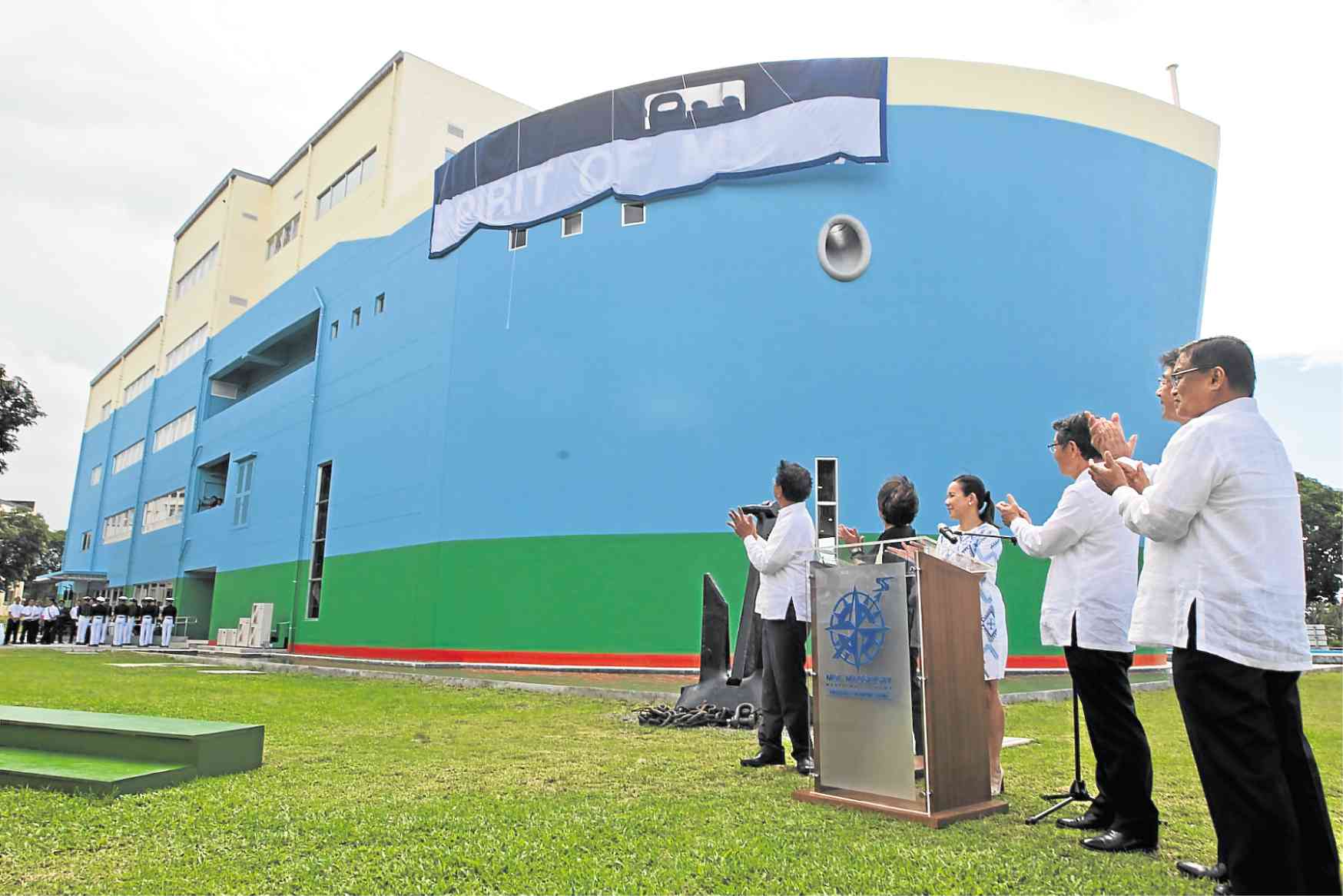P2-B maritime school rises in Cavite

DASMARIÑAS CITY — A Japanese-Philippine business collaboration has given rise to a maritime school that offers state-of-the-art equipment and professional training for seafarers.
MOL-Magsaysay Maritime Academy (MMMA) was inaugurated on Wednesday as the Philippines took action on issues raised in March by the European Commission concerning the competencies and certification of Filipino seafarers in European Union countries.
MOL stands for Mitsui O.S.K. Lines Ltd., a Japanese company that handles marine transportation, warehousing and cargo handling.
Magsaysay Maritime Corp., a subsidiary of Magsaysay People Resources Corp., is a crew provider to the maritime industry in the Philippines, Indonesia, China, Nepal, Eastern Europe and in Central and North America.

INAUGURAL CEREMONY Sen. Grace Poe and officials of the Magsaysay Group and Mitsui O.S.K. Lines Ltd. on Wednesday inaugurate MOL-Magsaysay Maritime Academy in Dasmariñas City, Cavite province. —LEO M. SABANGAN II
International standards
Philippine government officials lauded the venture, which, they said, signaled the Philippines’ compliance with international standards for maritime higher education.
Transportation Secretary Arthur Tugade said he was “impressed” by the school housing a “ship on campus,” a student complex, academic buildings and dormitories on a 13.7-hectare property in this city.
Sen. Grace Poe, one of the inaugural guests, said MMMA was “probably the best school in Asia now” offering a bachelor’s degree in marine transportation and marine engineering.
Magsaysay Group president Doris Ho said the company and MOL, whose partnership spanned over two decades, had invested P2 billion to build MMMA.
One of largest blocks
The ship on campus looks like a real ship, with an engine room, electronic laboratory, distress and safety systems, and radar plotting capacities that “simulate the work environment of life at sea,” said Magsaysay People Resources Corp. president Marlon Roño.
The school features the latest in Norwegian maritime technology.
With 380,000 to 400,000 seafarers deployed around the globe, Filipinos make up one of the “single, largest nationality block[s]” of seafarers, Poe said.
She said seafarers contributed P5.9 billion of the P28 billion total remittance of overseas Filipino workers last year.
The Philippines is currently the second-largest supplier of maritime crew in the world, after China, according to Maritime Industry Authority (Marina) Administrator Rey Leonardo Guerrero.
In 2017, Guerrero said, about 25,000 students completed the seafarers’ academic requirements, but only 5,000 got employed.
“We don’t want to just be No. 1 [in workforce] but No. 1 in competencies [as well],” he said.
Tugade said the government was trying to lighten the burden of seafarers by cutting the processing time of seaman’s books to one day from “weeks to months.”
Marina now offers coffee and biscuits to seafarers waiting in long lines as their seaman’s books are being processed, he said.